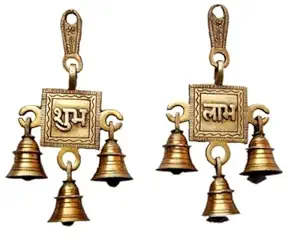परिचय:
चंडी शक्तिपीठ भारत के पश्चिम बंगाल में स्थित एक पवित्र मंदिर है, जो माता चंडी को समर्पित है। माना जाता है कि माता सती का चेहरा यहीं गिरा था। यह मंदिर भक्तों के लिए शक्ति, सुरक्षा, साहस और दैवीय आशीर्वाद प्राप्त करने का प्रमुख स्थल है। माता चंडी बुराई के नाश, शक्ति और धर्म की विजय का प्रतीक हैं।
इतिहास और पौराणिक कथा:
हिंदू पुराणों के अनुसार, सती माता के आत्मदाह के बाद भगवान शिव ने उनका शव उठाया और तांडव किया। ब्रह्मांडीय संतुलन स्थापित करने के लिए भगवान विष्णु ने सुदर्शन चक्र से उनका शरीर काटा। सती का चेहरा पश्चिम बंगाल में गिरे, जिससे चंडी शक्तिपीठ की स्थापना हुई। भक्तों का विश्वास है कि यहां पूजा करने से बाधाएं दूर होती हैं, साहस मिलता है, आध्यात्मिक शक्ति बढ़ती है और सुरक्षा प्राप्त होती है।
मंदिर वास्तुकला:
चंडी मंदिर में पारंपरिक बंगाली मंदिर स्थापत्य शैली है। गर्भगृह में माता चंडी की मूर्ति स्थापित है। मंदिर को नक्काशी, पवित्र प्रतीकों और त्योहारों के दौरान रंग-बिरंगी सजावट से सजाया जाता है। परिसर में छोटे मंदिर अन्य देवताओं के लिए भी हैं, और ध्यान व अर्पण के स्थान उपलब्ध हैं।
महत्व:
-
चंडी शक्तिपीठ पश्चिम बंगाल में शक्ति पूजा का प्रमुख केंद्र है।
-
भक्त यहाँ शक्ति, साहस, सुरक्षा और इच्छाओं की पूर्ति प्राप्त करने के लिए आते हैं।
-
प्रमुख त्योहारों में दुर्गा पूजा, नवरात्रि और चंडी पूजा शामिल हैं।
पूजा और अनुष्ठान:
-
अर्पण में शामिल हैं: लाल फूल, फल, मिठाई, नारियल, धूप और सिंदूर।
-
पुजारी प्रतिदिन आरती, अभिषेक और विशेष पूजा करते हैं।
-
भक्त चंडी मंत्रों का जाप और ध्यान करते हैं और सुरक्षा व आध्यात्मिक शक्ति के लिए आशीर्वाद प्राप्त करते हैं।
यात्रा सुझाव:
-
यात्रा का सर्वोत्तम समय: सितंबर से मार्च, विशेष रूप से नवरात्रि और दुर्गा पूजा के दौरान।
-
नजदीकी रेलवे स्टेशन: कोलकाता या हावड़ा रेलवे स्टेशन।
-
आसपास के दर्शनीय स्थल: कालीघाट काली मंदिर, दक्षिणेश्वर काली मंदिर और पश्चिम बंगाल के अन्य शक्तिपीठ।
Overview of Chandi Shaktipeeth
Location and Significance
Chandi Shaktipeeth is situated in the serene village of Kogram, Nutanhat, Bardhaman district, West Bengal. It is believed to be the site where the face of Goddess Sati fell, making it one of the 51 Shakti Peethas.
Historical Background
The temple's origins are rooted in the ancient legend of Goddess Sati's self-immolation and Lord Shiva's subsequent grief. The site has been a place of worship for centuries, with the current structure dating back to the 17th century.
Deity Worshipped
The primary deity is Goddess Chandi, a fierce form of Goddess Durga. She is revered for her role in vanquishing the demon Mahishasura, symbolizing the triumph of good over evil.
Mythological Significance
According to legend, the face of Goddess Sati fell at this location during the cosmic dance of Lord Shiva, symbolizing the sacredness of the site.
Importance in Shakti Peetha Tradition
As one of the 51 Shakti Peethas, Chandi Shaktipeeth holds immense spiritual significance for devotees seeking blessings and protection from the goddess.
Temple Architecture and Design
Temple Structure
The temple showcases traditional Bengali architecture with intricate carvings and a towering spire, reflecting the spiritual heritage of the region.
Deity Idol
The idol of Goddess Chandi is sculpted with great artistry, depicting her in a majestic and protective posture, adorned with traditional ornaments.
Temple Premises
The temple premises are meticulously maintained, featuring lush greenery and sacred groves that enhance the spiritual experience of visitors.
Sacred Tank
Adjacent to the temple is a sacred tank, where devotees perform ritualistic ablutions, believed to purify the soul and body.
Temple Festivals
The temple hosts various festivals throughout the year, attracting devotees from all over the region to partake in the celebrations.
Temple Rituals and Worship
Daily Pujas
Daily pujas are conducted with devotion, involving offerings of flowers, fruits, and incense to seek the goddess's blessings.
Special Prayers
Devotees perform special prayers during auspicious occasions, seeking divine intervention for personal and communal well-being.
Temple Offerings
Common offerings include coconut, jaggery, and traditional sweets, symbolizing gratitude and devotion towards the goddess.
Temple Priests
The temple is managed by a group of dedicated priests who perform rituals with precision and ensure the sanctity of the temple is maintained.
Spiritual Significance
Engaging in temple rituals is believed to bring spiritual upliftment, mental peace, and divine protection to the devotees.
Festivals and Celebrations
Major Festivals
The temple celebrates major festivals like Navratri with grandeur, featuring processions, traditional music, and dance.
Devotee Participation
Devotees actively participate in the festivals, offering prayers, performing rituals, and engaging in community feasts.
Temple Decorations
During festivals, the temple is beautifully decorated with lights, flowers, and traditional motifs, creating a vibrant atmosphere.
Traditional Performances
Traditional art forms like dance and music are performed during festivals, adding cultural richness to the celebrations.
Community Involvement
The festivals foster a sense of community, bringing together people from various backgrounds to celebrate and uphold traditions.
Travel and Accessibility
Location Details
The temple is located in Kogram, Nutanhat, Bardhaman district, West Bengal, offering a peaceful and spiritual environment.
Nearest Railway Station
The nearest railway station is Guskara Junction, about 16 km from the temple, with regular train services connecting to major cities.
Nearest Airport
The nearest airport is Netaji Subhas Chandra Bose International Airport, approximately 150 km from the temple, with flights connecting to major cities.
Local Transportation
Local transportation options include buses, taxis, and auto-rickshaws, making it convenient for visitors to reach the temple.
Accommodation Options
There are several accommodation options ranging from budget hotels to guesthouses in Bardhaman city, catering to the needs of pilgrims.
Chandi Shaktipeeth is situated in the serene village of Kogram, Nutanhat, Bardhaman district, West Bengal. It is believed to be the site where the face of Goddess Sati fell, making it one of the 51 Shakti Peethas.
The temple's origins are rooted in the ancient legend of Goddess Sati's self-immolation and Lord Shiva's subsequent grief. The site has been a place of worship for centuries, with the current structure dating back to the 17th century.
The primary deity is Goddess Chandi, a fierce form of Goddess Durga. She is revered for her role in vanquishing the demon Mahishasura, symbolizing the triumph of good over evil.
According to legend, the face of Goddess Sati fell at this location during the cosmic dance of Lord Shiva, symbolizing the sacredness of the site.
As one of the 51 Shakti Peethas, Chandi Shaktipeeth holds immense spiritual significance for devotees seeking blessings and protection from the goddess.
The temple showcases traditional Bengali architecture with intricate carvings and a towering spire, reflecting the spiritual heritage of the region.
The idol of Goddess Chandi is sculpted with great artistry, depicting her in a majestic and protective posture, adorned with traditional ornaments.
The temple premises are meticulously maintained, featuring lush greenery and sacred groves that enhance the spiritual experience of visitors.
Adjacent to the temple is a sacred tank, where devotees perform ritualistic ablutions, believed to purify the soul and body.
The temple hosts various festivals throughout the year, attracting devotees from all over the region to partake in the celebrations.
Daily pujas are conducted with devotion, involving offerings of flowers, fruits, and incense to seek the goddess's blessings.
Devotees perform special prayers during auspicious occasions, seeking divine intervention for personal and communal well-being.
Common offerings include coconut, jaggery, and traditional sweets, symbolizing gratitude and devotion towards the goddess.
The temple is managed by a group of dedicated priests who perform rituals with precision and ensure the sanctity of the temple is maintained.
Engaging in temple rituals is believed to bring spiritual upliftment, mental peace, and divine protection to the devotees.
The temple celebrates major festivals like Navratri with grandeur, featuring processions, traditional music, and dance.
Devotees actively participate in the festivals, offering prayers, performing rituals, and engaging in community feasts.
During festivals, the temple is beautifully decorated with lights, flowers, and traditional motifs, creating a vibrant atmosphere.
Traditional art forms like dance and music are performed during festivals, adding cultural richness to the celebrations.
The festivals foster a sense of community, bringing together people from various backgrounds to celebrate and uphold traditions.
The temple is located in Kogram, Nutanhat, Bardhaman district, West Bengal, offering a peaceful and spiritual environment.
The nearest railway station is Guskara Junction, about 16 km from the temple, with regular train services connecting to major cities.
The nearest airport is Netaji Subhas Chandra Bose International Airport, approximately 150 km from the temple, with flights connecting to major cities.
Local transportation options include buses, taxis, and auto-rickshaws, making it convenient for visitors to reach the temple.
There are several accommodation options ranging from budget hotels to guesthouses in Bardhaman city, catering to the needs of pilgrims.


